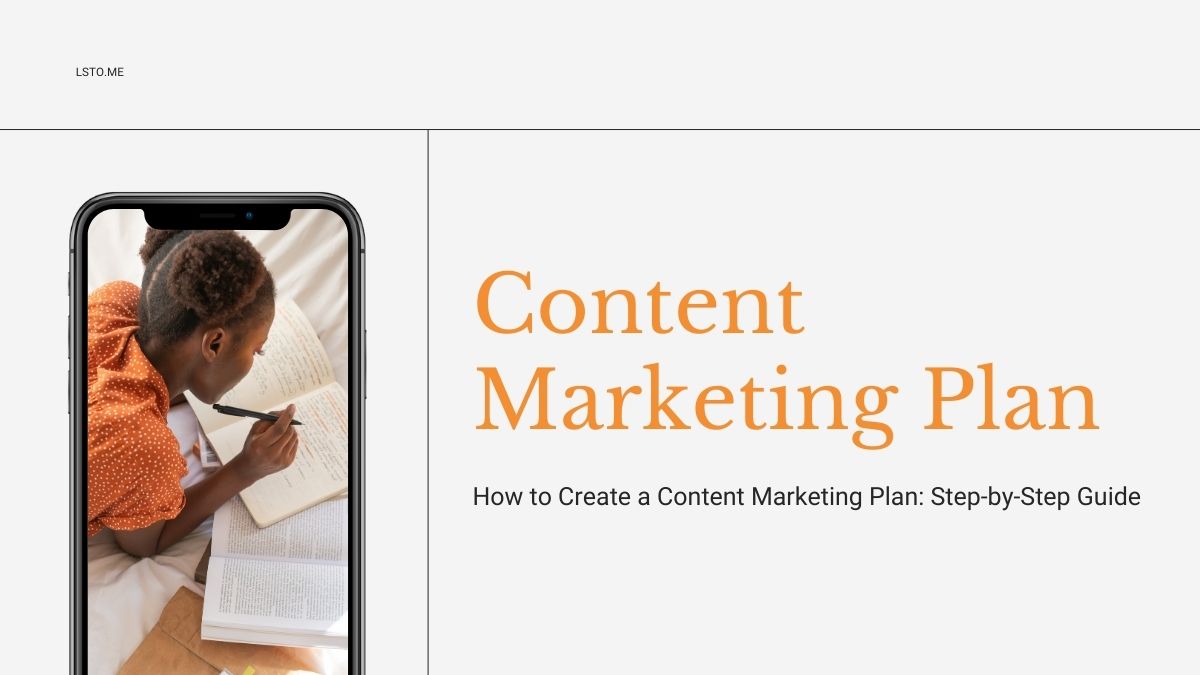
Today’s digital world requires content marketing. It is a key strategy for getting and keeping customers. But, the success of your content marketing depends on a good plan. A strong content marketing plan is a roadmap. It guides your efforts and ensures your content resonates with your target audience. This is a step-by-step guide. We’ll walk you through making an effective content marketing plan.
Step 1: Define Your Goals
Before you start creating content, it’s essential to define your goals. What do you want to achieve with your content marketing efforts? Common goals include:
- Brand Awareness: Increase your brand’s visibility and recognition.
- Lead Generation: Attract potential customers and collect their contact information.
- Customer Engagement: Foster a deeper relationship with your existing customers.
- Sales: Drive revenue through content that encourages purchasing decisions.
- SEO: Improve your search engine rankings to attract organic traffic.
Pro Tip: Use the SMART criteria to set your goals. Ensure they are Specific, Measurable, Achievable, Relevant, and Time-bound.
Step 2: Understand Your Audience
Knowing your audience is crucial for creating content that resonates. Start by developing buyer personas—detailed profiles of your ideal customers. Include information such as demographics, interests, pain points, and buying behavior.
Steps to Create Buyer Personas:
- Research: Use tools like Google Analytics, social media insights, and customer surveys to gather data.
- Segment: Group your audience into segments based on shared characteristics.
- Profile: Create detailed profiles for each segment, including names, job titles, interests, and challenges.
Pro Tip: Regularly update your buyer personas to reflect any changes in your audience’s behavior or preferences.
Step 3: Conduct a Content Audit
Before creating new content, take stock of what you already have. A content audit helps you find existing content. You can then repurpose, update, or discard it.
Steps for Conducting a Content Audit:
- Inventory: List all your existing content, including blog posts, videos, infographics, and social media posts.
- Analyze: Assess the performance of each piece of content based on metrics like traffic, engagement, and conversion rates.
- Categorize: Group content into categories such as high-performing, underperforming, and outdated.
- Plan: Decide which content to update, repurpose, or remove based on your goals and audience needs.
Pro Tip: Use content audit tools like Screaming Frog, SEMrush, or Ahrefs to streamline the process.
Step 4: Identify Content Gaps
Once you’ve audited your existing content, identify gaps where new content is needed. Look for topics that matter to your audience. But, don’t cover them well yet.
How to Identify Content Gaps:
- Keyword Research: Use tools like Google Keyword Planner, Ahrefs, or SEMrush to identify keywords and topics your audience is searching for.
- Competitor Analysis: Analyze your competitors’ content to identify topics they cover that you don’t.
- Customer Feedback: Review customer feedback, comments, and questions to identify unmet information needs.
Pro Tip: Create a content gap analysis spreadsheet to track potential topics and prioritize them based on relevance and search volume.
Step 5: Develop a Content Strategy
Your content strategy outlines how you will make, publish, and manage your content. It does this to achieve your goals. It should include:
- Content Themes: Broad topics that align with your brand and audience interests.
- Content Types: Different formats such as blog posts, videos, infographics, podcasts, and social media posts.
- Content Calendar: A schedule for creating and publishing content, ensuring consistency and timely delivery.
Steps to Develop a Content Strategy:
- Define Themes: Choose 3-5 core themes that align with your brand and audience needs.
- Select Formats: Decide on the types of content that will best convey your messages and engage your audience.
- Create a Calendar: Plan your content production and publication schedule, including deadlines, publication dates, and responsible team members.
Pro Tip: Use content calendar tools like Trello, Asana, or CoSchedule to manage your schedule effectively.
Step 6: Create High-Quality Content
Creating high-quality, valuable content is the cornerstone of your content marketing plan. Focus on producing content that educates, entertains, or solves problems for your audience.
Tips for Creating High-Quality Content:
- Research Thoroughly: Ensure your content is well-researched and backed by credible sources.
- Write Compelling Headlines: Craft headlines that grab attention and entice readers to click.
- Use Visuals: Incorporate images, infographics, and videos to enhance your content and make it more engaging.
- Optimize for SEO: Use relevant keywords, meta tags, and internal linking to improve your content’s search engine visibility.
- Edit and Proofread: Ensure your content is free of errors and flows smoothly by thoroughly editing and proofreading.
Pro Tip: Consider using content creation tools like Grammarly for proofreading, Canva for creating visuals, and Yoast SEO for optimization.
Step 7: Promote Your Content
Creating great content is just the beginning. You also need to promote it effectively to reach your target audience.
Effective Content Promotion Strategies:
- Social Media: Share your content on social media platforms where your audience is active.
- Email Marketing: Distribute your content to your email subscribers.
- Influencer Partnerships: Collaborate with influencers in your industry to amplify your content’s reach.
- Paid Advertising: Use paid channels like Google Ads, Facebook Ads, and LinkedIn Ads to promote your content.
- Content Syndication: Publish your content on third-party sites to reach a broader audience.
Pro Tip: Use analytics tools like Google Analytics, Facebook Insights, and HubSpot to track the performance of your promotion efforts and adjust your strategy accordingly.
Step 8: Measure and Analyze Performance
Measure your content marketing performance often. Analyze it to see what’s working and what needs improvement.
Key Metrics to Track:
- Traffic: Monitor the number of visitors to your content.
- Engagement: Track metrics like time on page, social shares, and comments.
- Conversions: Measure how well your content converts visitors into leads or customers.
- SEO Performance: Analyze your content’s search engine rankings and organic traffic.
Tools for Measuring Performance:
- Google Analytics: Track website traffic and user behavior.
- SEMrush: Monitor keyword rankings and SEO performance.
- HubSpot: Measure engagement and conversions.
- Social Media Analytics: Use platform-specific analytics tools to track social media performance.
Pro Tip: Regularly review your analytics data and use it to inform your content strategy. Identify trends and patterns to replicate successful content and improve underperforming pieces.
Step 9: Adjust and Improve
Content marketing is an ongoing process. Keep refining your content marketing plan. Improve it based on the insights you gather.
How to Continuously Improve:
- Feedback Loop: Regularly solicit feedback from your audience to understand their needs and preferences.
- A/B Testing: Experiment with different content formats, headlines, and promotional strategies to see what works best.
- Stay Updated: Keep up with industry trends and best practices to ensure your content remains relevant and effective.
- Iterate: Use the insights gained from performance analysis to make data-driven adjustments to your content strategy.
Pro Tip: Schedule regular reviews of your content marketing plan to ensure it remains aligned with your goals and audience needs.
Conclusion
Creating a content marketing plan requires careful planning, consistent execution, and ongoing optimization. By following these steps, you can build a strong content marketing plan. First, define your goals and understand your audience. Then, do a content audit and find content gaps. Next, make a content strategy and create good content. Promote it well and measure its performance. Lastly, keep improving.
Remember, content marketing is a marathon, not a sprint. Stay committed to giving value to your audience. Over time, you’ll see the results in more brand awareness, engagement, and conversions.




